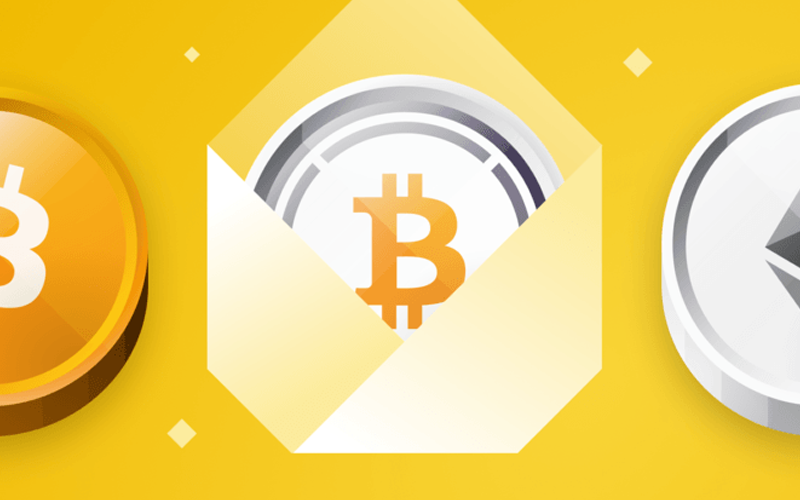What are wrapped tokens in crypto? This is a special type of token which is broadly a clone of an underlying asset designed to function on an adopted blockchain.
Bitcoin and Ethereum are two of the largest cryptocurrencies globally. Yet despite their immense popularity and accessibility, they are technically incompatible with each other; we cannot use BTC on the Ethereum network and vice versa.
So, the solution is wrapped tokens, which circumvent this limitation and permit non-native coins to work on non-native blockchains. For instance, the natural BTC coin is incompatible on any of Ethereum’s platforms. However, Wrapped Bitcoin (WBTC) works.
According to CryptoSlate, these coins presently dominate about 0.65% of the entire crypto market, which is valued in the region at $10.14 billion.
Wrapped tokens are evidently an emerging space and might be a little tricky to grasp, as with most things in digital currencies. This article will properly define what this token is, how they work, examples of them, and their benefits and drawbacks.
So, what are wrapped tokens?
A wrapped token is a cryptocurrency tracking the price of an underlying asset; the original coin is ‘wrapped,’ allowing it to work efficiently on an unrelated blockchain. Analysts refer to a ‘wrapper,’ essentially a digital vault of sorts maintained by a custodian to prove the existence of the un-wrapped asset.
The value of the new coin is 100% correlated with its original token. Users can redeem the initial coins in their former state at any time. Such tokens help increase blockchain interoperability, which is just a way of ensuring these ledgers can communicate.
At present, this is one of the prominent drawbacks of cryptocurrencies, as each distributed ledger is distinctly unique from another. Any applications resulting from their creation will also be limited to the ledgers they originate from.
An entity referred to as a custodian, either a merchant, multi-signature wallet, a DAO (decentralized autonomous organization), or smart contact, holds a reserve of the actual token being wrapped.
This custodian is chiefly a proof of reserve and sends an order to the blockchain, which mints the new version. When the holder needs to redeem the wrapped token back to its previous state, the custodian puts a ‘burn’ request to convert the two.
Examples of popular wrapped tokens
The majority of these tokens, unsurprisingly, are Ethereum-based. The coin in this realm with the most trading volume is Wrapped Bitcoin, an ERC20 or Ethereum-created asset with a market cap of roughly $7 billion at the time of writing.
It is also presently the 22nd most traded cryptocurrency because of the inherent dominance of its parent coin. Wrapped Bitcoin is a tokenized form of Bitcoin running on Ethereum’s suite of applications like exchanges, prediction markets, lending services, and so on.
BitGo, Kyber Network, and Ren – collectively known as the WBTC DAO – developed WBTC. As briefly mentioned, the value of WBTC directly correlates with the price of BTC. This organization is the custodian holding the reserves of Bitcoin sent by users who need the wrapped version.
A similar token is renBTC is a wrapped version of Bitcoin on Ren, which is a cross-chain, liquidity-providing, swapping protocol for Ethereum, Bitcoin, Bitcoin Cash, Zcash, and other tokens. Like WBTC, renBTC also tracks the value of Bitcoin on a 1:1 ratio.
Benefits and limitations of wrapped tokens
Like any inventions still in their infancy stages, wrapped tokens are far from perfect. Let’s look at some advantages and disadvantages.
Pros
- Integration: One of the primary purposes of these tokens is incorporation, fostering cross-chain compatibility where holders of different coins interact with other independent ledgers.
Another benefit is these tokens allow traders to keep the original coin while also using it on other applications.
Let’s consider the advantages of WBTC.
Ordinarily, someone who planned to use a portion of their Bitcoin on Ethereum may have needed to either sell a bit of BTC or allocate their funds to purchase other ERC20 tokens.
As many Bitcoin holders are ‘HODLers,’ they would not like to sell any bit of their investment. Therefore, WBTC allows for retaining the original Bitcoin to potentially profit from price increases and using it on other applications.
- Capital efficiency: Another crucial factor for such tokens is capital efficiency. A coin with the market cap of Bitcoin brings along massive liquidity, which it injects into any platform. This attribute allows for a larger trading volume and introduces a new market.
- Better transaction speed: An inherently slow-confirming coin like Bitcoin is made quicker for confirming transactions on another platform with innately faster speeds.
Again, for instance, Ethereum’s block time is roughly 15 seconds, a stark contrast to Bitcoin’s longer 10 minutes. Therefore, as a WBTC user, one can transact with this token in numerous ways and enjoy swift clearance times, unlike if they were trading the standard Bitcoin somewhere else.
While this section has frequently referenced WBTC, these benefits also apply to any other wrapped token.
Cons
- Possible centralization: The landscape of custodians maintaining the original coins is murky presently. Users need to trust a centralized third party for reserves of their assets, which some may consider a counterparty risk for abuse of power and manipulation.
- Higher fees: Converting the original coin into a wrapped form and then back again results in costs for each transaction.
Final word
Despite wrapped tokens being currently a little rough around the edges, the concept has good intentions; developing bridges between distinctly distributed ledgers.
Blockchain incompatibility has been a looming problem in cryptocurrencies, resulting in higher transaction costs, cumbersome processes, and an overall tricky customer experience. By having assets like wrapped tokens, cross-functionality becomes a possibility.
